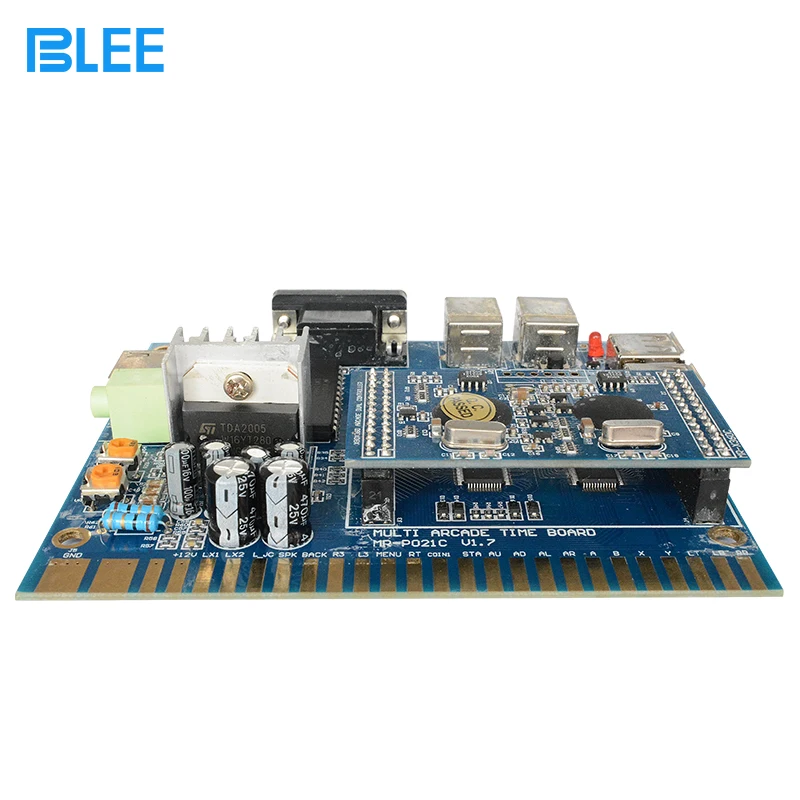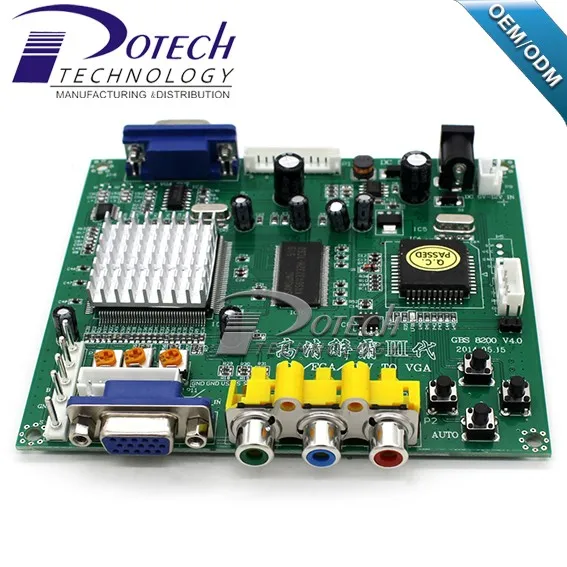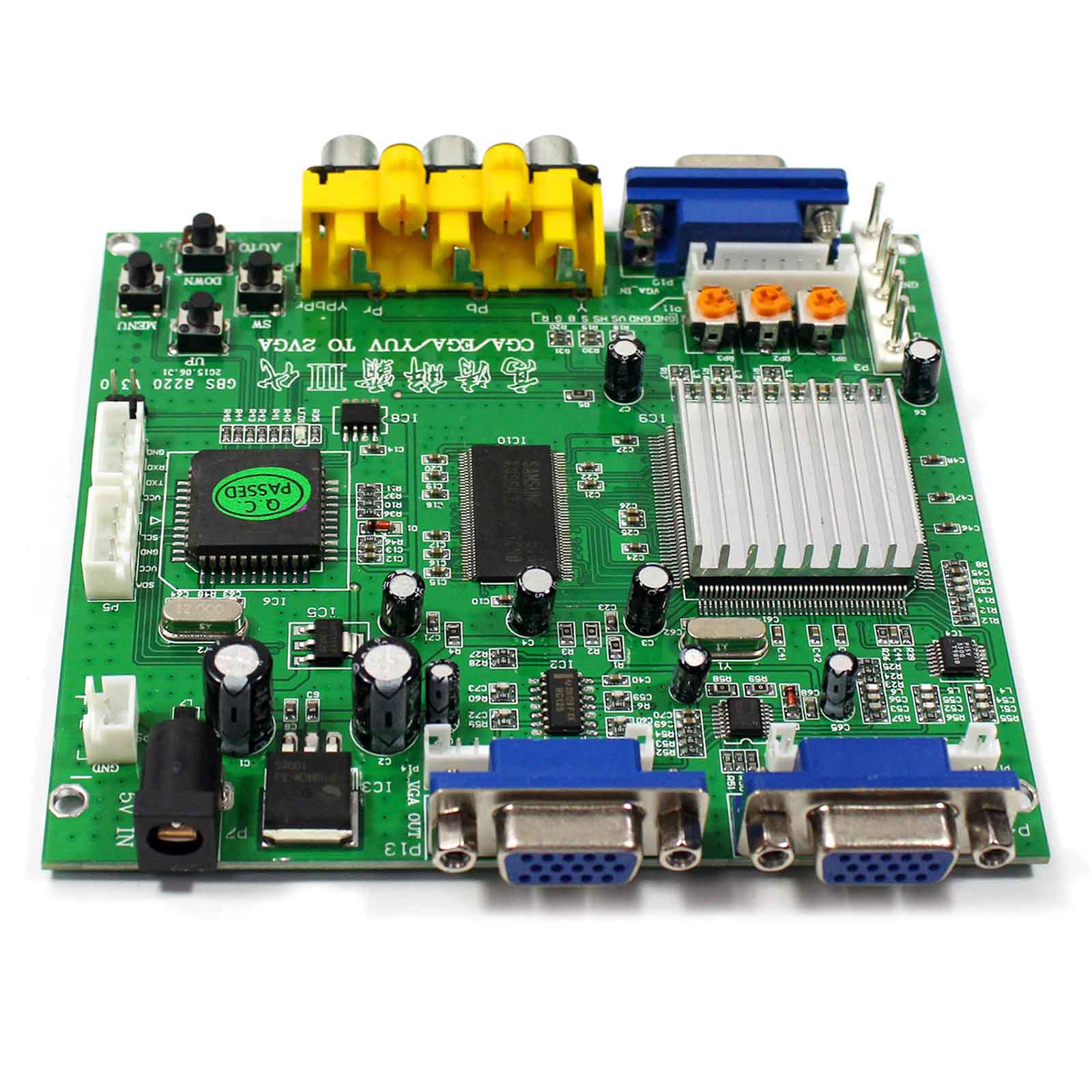
- EGA TO VGA CONVERTER CIRCUIT GENERATOR
- EGA TO VGA CONVERTER CIRCUIT UPGRADE
- EGA TO VGA CONVERTER CIRCUIT CODE
- EGA TO VGA CONVERTER CIRCUIT TV
Otherwise, there is not enough difference between colors 7 and 8 (Both are almost the same tone of gray). To use are 0x00/0xAA when intensity is low, and 0x55/0xFF when high. Same thing for green and blue).įirst of all, there is a spcial exception for yellow (to get a nice brown instead of a sickly dark yellow). (Example: For the red output, if the intensity bit is high, output will be 0xff or 0x7f depending on the CGA red bit, and if intensity is 0, the output will be either 0x00 or 0x7f.
EGA TO VGA CONVERTER CIRCUIT CODE
I had initially written code that did the RGBI to RGB conversion using a simple Still see a bit of jitter, but it is within what I consider quite acceptable.Ĭolors One of the final touch was implementing correct colors. Resisted and persevered to finally obtain a stable picture! The pixel clock (through a BNC connector I would add at the back) but I The GBS8200s input circuitry looks like this:. I was tempted more than once to modify my Tandy 1000 computer to extract im using GBS-8200 CGA/EGA to VGA converter (manual for this one. Such as dancing lines, deformed characters.

Otherwise, there are interesting but undesirable special effects

Is to keep the time between pixel sampling and the hsync pulse constant (prevents It by resetting the division counters to zero after each CGA hsync. The high frequency clock (they are therefore in phase). So I a lower frequency clock derived by dividing But I can't use the same highįrequency to store scanline data since the required buffer becomes too large To properly synchronise tothe HSYNC edge.
EGA TO VGA CONVERTER CIRCUIT GENERATOR
Generator clock (the pixel clock) I have to sample at a much higher frequency First, as I don't have access to the CGA video
EGA TO VGA CONVERTER CIRCUIT TV
Would 22kΩ pull-up/pull-down resistors work or do I need a different value?ĭoes it make a difference if I use pull-up or pull-down resistors for the DIP switch?ĭo the black and blank voltage levels need to be different or will a TV still accept the signal if they are both 0V? Apparently there is a difference, but I don't know if this is necessary.Too much jitter There were many difficulties. Is it OK to connect the Vcc and Vref pins on the JTAG header together?

Is it a good idea to run the LM6172s off ☙V? Does the DC/DC converter make sense here or is there a better solution?Ĭan I power this board from a phone charger or will it be too noisy for a reasonable image quality?ĭoes it make sense to use 220nF caps for all ICs and 100♟ caps at the connectors?

The board dimensions are 120.65 * 76.2 mm.ĭo I need additional vias to connect the front and back ground planes or are the though-hole parts enough?ĭo the op-amps I've used make sense for this purpose? I used only through-hole parts because I'm not that good at soldering yet.Īll traces except those for power are 0.25 mm wide Vcc is 0.75mm, Vdd and Vee are 0.5 mm. The LED changes color depending on the input mode. The potentiometers are for fine-tuning the output levels. The CPLD generates the YPbPr signals from the input, the resistor packs form three 4-bit R-2R DACs, the LM6172s buffer the analog signals and subtract the sync from the Y signal. Here are some diagrams for the sync signals.
EGA TO VGA CONVERTER CIRCUIT UPGRADE
Used for the easy upgrade of old monitors to modern. I used a low-pass filter to determine VSync polarity because an EGA card uses it to signal whether it outputs a 350-line or a 200-line signal and I don't want to change this setting manually every time it changes at runtime. The RGB, CGA, EGA, HD to VGA Converter PCB board is designed for application in Industry and. I assume that CGA should work with all screens, but whether MDA and EGA work might depend on the monitor - the timings for these modes are between SDTV and HDTV standards, so they might not always sync. It is supposed to take a TTL video signal from old computers and convert it to component video.


 0 kommentar(er)
0 kommentar(er)
